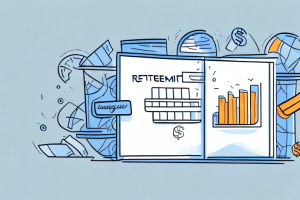Determining what constitutes a good monthly retirement income is a crucial aspect of planning for your future. As retirement approaches, you need to consider various factors that influence your income needs and estimate the amount of money required to maintain a comfortable lifestyle. This article will delve into the different elements that help gauge an appropriate retirement income, including assessing individual goals, estimating expenses, exploring income sources, and strategic investment strategies, among others.
Factors to consider when determining your retirement income needs
When planning for retirement, it is essential to take into account several factors that will influence your income requirements. These factors include your desired lifestyle, housing situation, healthcare needs, travel aspirations, and any outstanding debts. Understanding your personal situation and goals will enable you to estimate the expenses you’ll incur during retirement accurately.
Additionally, it is important to consider the potential impact of inflation on your retirement income needs. Over time, the cost of goods and services tends to increase, meaning that the purchasing power of your retirement savings may decrease. To account for this, it is advisable to factor in an inflation rate when calculating your retirement income needs. This will help ensure that your income remains sufficient to cover your expenses throughout your retirement years.
Understanding the importance of a solid retirement income plan
A well-structured retirement income plan is vital in ensuring financial stability and peace of mind during retirement. It involves evaluating your current savings, investment accounts, and potential income streams, such as pensions, annuities, and social security benefits. Crafting a comprehensive plan that aligns with your financial goals will help you maintain a comfortable lifestyle without worrying about running out of money in the later years.
One important aspect of a solid retirement income plan is diversification. Diversifying your investments can help mitigate risk and increase the likelihood of consistent returns. This can be achieved by spreading your investments across different asset classes, such as stocks, bonds, and real estate. By diversifying, you can potentially benefit from the growth of different sectors and reduce the impact of market fluctuations on your overall retirement income.
Another key consideration in retirement income planning is inflation. Over time, the cost of living tends to increase due to inflation. It is important to account for this when creating your retirement income plan. One strategy to combat inflation is to invest in assets that have historically outpaced inflation, such as stocks or real estate. Additionally, considering investments that offer inflation-adjusted income, such as Treasury Inflation-Protected Securities (TIPS), can help protect your purchasing power in retirement.
How much money do you need to retire comfortably?
One of the most common questions asked is, “How much money do I need to retire comfortably?” The answer varies from person to person, depending on various factors such as location, lifestyle, health, and inflation rates. It is recommended to aim for a replacement income of 70% to 80% of your pre-retirement earnings to cover all living expenses and ensure a comfortable standard of living.
However, it is important to note that this percentage may not be sufficient for everyone. Some individuals may have higher expenses due to medical conditions or other unforeseen circumstances. Additionally, it is crucial to consider the potential impact of inflation on your retirement savings. As the cost of living increases over time, your retirement income may need to be adjusted accordingly.
Assessing your individual retirement income goals
To determine an appropriate monthly retirement income, it is crucial to assess your individual retirement income goals thoroughly. Consider your desired lifestyle, including factors such as travel, hobbies, and leisure activities that you wish to pursue during retirement. Additionally, don’t forget to factor in any potential healthcare costs, long-term care needs, and unexpected expenses. Evaluating your goals comprehensively will help you create an income plan that aligns with your aspirations.
One important aspect to consider when assessing your individual retirement income goals is the potential impact of inflation. Over time, the cost of living tends to increase, which means that the purchasing power of your retirement income may decrease. It is essential to account for inflation when determining the amount of income you will need during retirement.
Another factor to consider is the potential for changes in your financial situation. While you may have a clear understanding of your current income and expenses, it is important to anticipate any changes that may occur in the future. This could include changes in employment, unexpected medical expenses, or changes in your family situation. By considering these potential changes, you can better prepare for any financial challenges that may arise during retirement.
Tips for estimating your monthly retirement expenses
Estimating your monthly retirement expenses requires a thorough examination and projection of all potential costs. Start by creating a budget that outlines your regular expenses, including housing, utilities, transportation, groceries, and healthcare. Don’t forget to account for discretionary spending such as entertainment and leisure activities. It is also wise to plan for unexpected expenses and set aside an emergency fund to ensure financial security throughout your retirement.
Exploring different sources of retirement income
When strategizing for a good monthly retirement income, understanding and exploring various income sources is crucial. These include social security benefits, pensions, annuities, retirement savings accounts, investments, and potential part-time work. By diversifying your income sources, you can create a reliable income stream that covers your expenses and provides flexibility in managing your finances during retirement.
Social Security: An essential part of your monthly retirement income
Social Security benefits play a vital role in securing a good monthly retirement income for many individuals. Understanding how these benefits are calculated and the different claiming strategies available is crucial. It is advisable to consult with a financial advisor to optimize Social Security benefits and ensure your income plan includes maximizing these government-provided funds.
The role of pensions and annuities in your retirement income plan
Pensions and annuities are retirement vehicles that can provide a stable monthly income. Pensions are typically offered by employers and offer a set payment for the rest of your life after you retire. Annuities, on the other hand, can be purchased from insurance companies and provide regular income in exchange for a lump sum or periodic payments. Including these income sources in your retirement plan can help guarantee a steady monthly income throughout your retirement years.
How to maximize your savings for a reliable monthly retirement income
To ensure a reliable monthly retirement income, it is essential to focus on maximizing your savings during your working years. This can be achieved by contributing regularly to retirement accounts, such as 401(k)s or IRAs, and taking advantage of any employer match programs. Additionally, reviewing and adjusting your investment portfolio periodically can bolster your savings and help generate a consistent income stream during retirement.
Investing strategies for generating ongoing retirement income
Investing wisely during retirement is crucial for generating ongoing income. It is advisable to adopt a balanced investment strategy that incorporates both growth and income-oriented assets. Diversifying your investment portfolio, considering both equities and fixed-income assets, can help enhance returns while minimizing risk. Regularly reviewing and adjusting your investment plan to align with your changing income needs is essential to support your desired monthly retirement income.
Balancing risk and return for sustainable monthly retirement income
Maintaining a balance between risk and return when investing for retirement income is paramount. While higher-risk investments may offer potentially higher returns, they also carry a greater chance of volatility and capital loss. On the other hand, more conservative investments may provide stability but can yield lower returns. Striking the right balance between these two factors is crucial to ensure a sustainable monthly retirement income.
Planning for inflation: Protecting your retirement income over time
Inflation is a significant consideration when determining a good monthly retirement income. Over time, the cost of living rises, impacting the purchasing power of your income. To protect your retirement income against inflation, ensure your investment plan includes assets that can appreciate and keep pace with the rising cost of goods and services. Periodically reassessing your expenses and adjusting your retirement plan to account for inflation will help safeguard your purchasing power and maintain a comfortable lifestyle.
Tax considerations and their impact on your monthly retirement income
Understanding the tax implications of your retirement income is crucial for effective financial planning. Different income sources are subject to diverse tax treatments, such as taxable, tax-deferred, or tax-free. By optimizing your income sources and strategically managing withdrawals from different accounts, you can potentially reduce your tax liability during retirement and maximize your monthly income.
The benefits and drawbacks of working part-time during retirement
For some individuals, working part-time during retirement can help supplement their monthly income and provide a sense of purpose. However, it is essential to weigh the benefits against the potential drawbacks, such as reduced free time, increased stress, and impact on Social Security benefits. Finding the right balance between work and leisure activities is key to ensuring a fulfilling retirement while maintaining financial stability.
Healthcare costs in retirement: Preparing for medical expenses
One critical aspect of retirement planning is preparing for healthcare costs. Medical expenses tend to increase as we age, and having adequate coverage is essential. Consider obtaining comprehensive health insurance, including Medicare or Medigap coverage, to protect against unforeseen medical bills. Additionally, allocating funds to a Health Savings Account (HSA) can provide tax advantages and help cover future healthcare expenses.
Longevity risk: Ensuring your monthly retirement income lasts
Living longer, while a blessing, can pose a financial challenge during retirement. Longevity risk refers to the possibility of outliving your retirement savings. To mitigate this risk, it is crucial to plan for a longer retirement period, accurately estimate expenses, and ensure your investment strategy accounts for a continued income stream. Consider consulting with a financial advisor to help establish a sustainable income that matches your expected lifespan.
Lifestyle choices and their influence on your desired monthly income
Your desired lifestyle during retirement has a significant impact on the level of monthly income required. Lifestyle choices, such as traveling extensively, pursuing expensive hobbies, or living in high-cost areas, will necessitate a higher retirement income. Conversely, adopting a frugal lifestyle can lower income needs. Reflecting on your ideal retirement lifestyle and aligning it with realistic income expectations is crucial to ensure financial comfort during your golden years.
Strategies to supplement your monthly retirement income through side hustles
Supplementing your retirement income with side hustles or part-time work can be an effective way to boost your monthly earnings and enhance financial security. Not only can a side hustle provide additional income, but it can also offer the opportunity to pursue passions or hobbies. Explore options such as consulting, freelancing, or starting a small business to generate extra income that aligns with your interests and capabilities.
Seeking professional advice on optimizing your monthly retirement income
Navigating the complexities of retirement income planning may require professional guidance. Seeking advice from certified financial planners or retirement income specialists can provide invaluable insights tailored to your specific situation. These professionals can help you optimize your income sources, create a comprehensive retirement plan, and align your investments with your desired monthly income. Investing in expert advice can ultimately increase your confidence and the likelihood of maintaining a good monthly retirement income.In conclusion, determining what constitutes a good monthly retirement income is a multifaceted undertaking. It requires a thorough evaluation of individual goals, estimated expenses, income sources, and investment strategies. By taking a comprehensive and proactive approach, you can ensure financial security and enjoy a comfortable retirement lifestyle. Remember to consult with professionals and periodically review and adjust your retirement income plan to stay on track towards achieving your financial goals.



